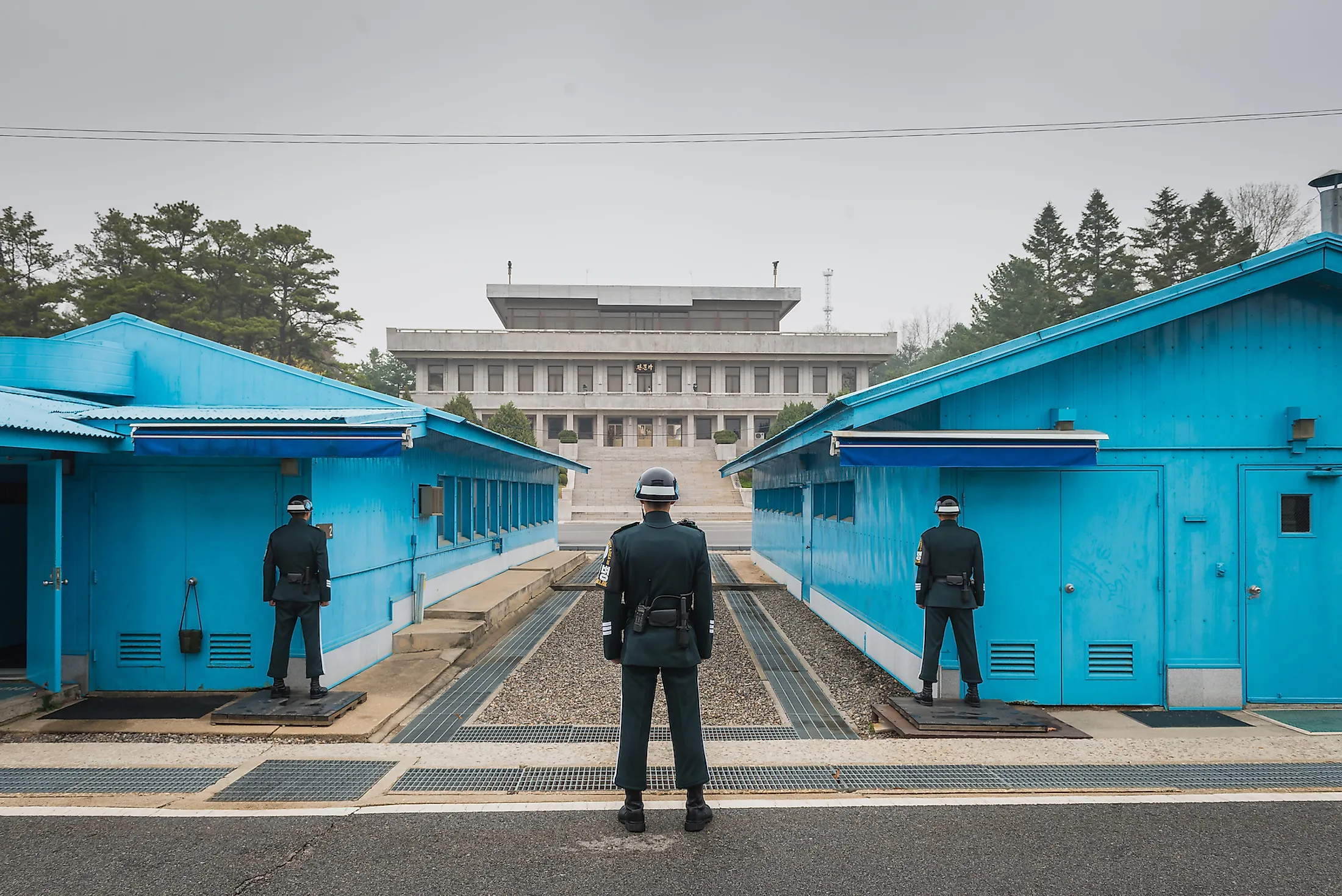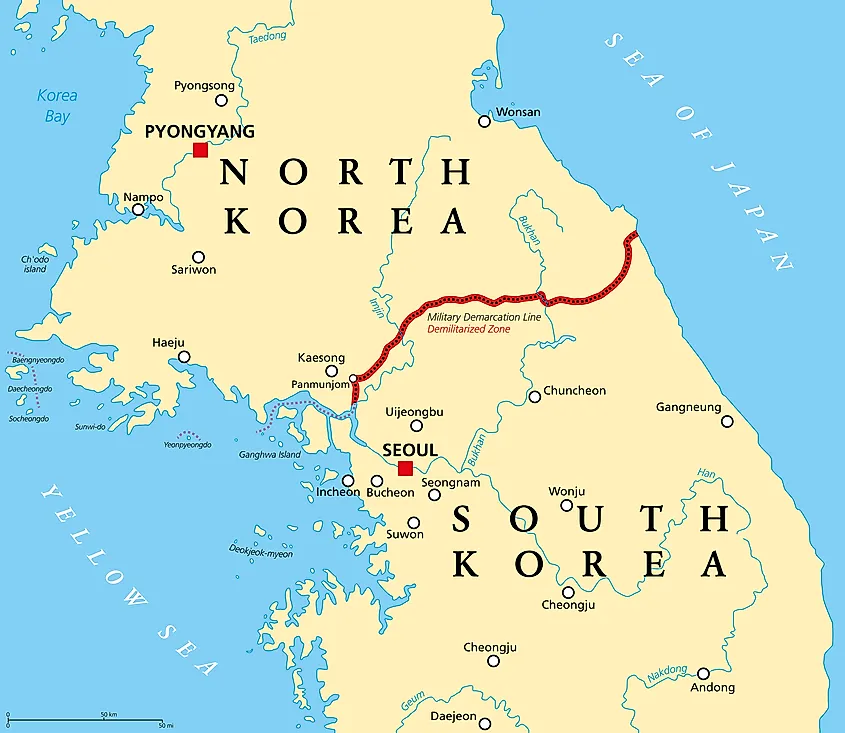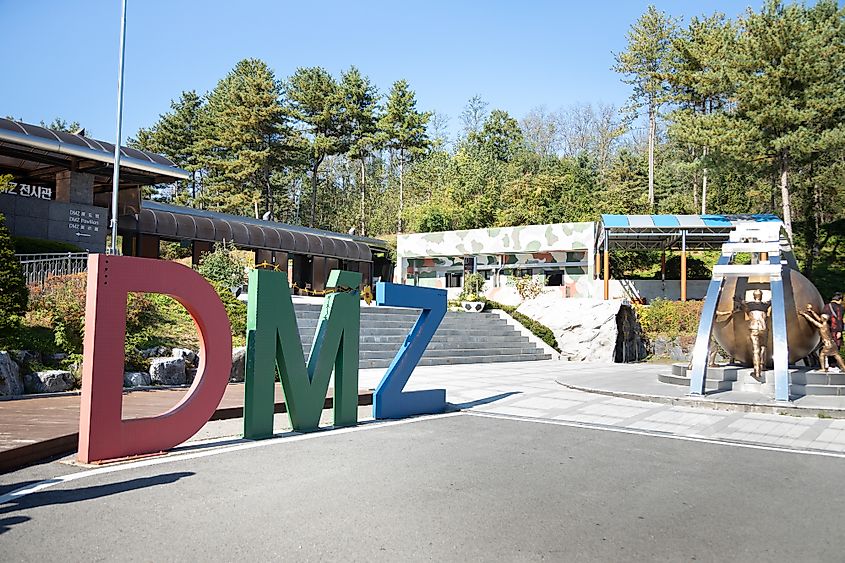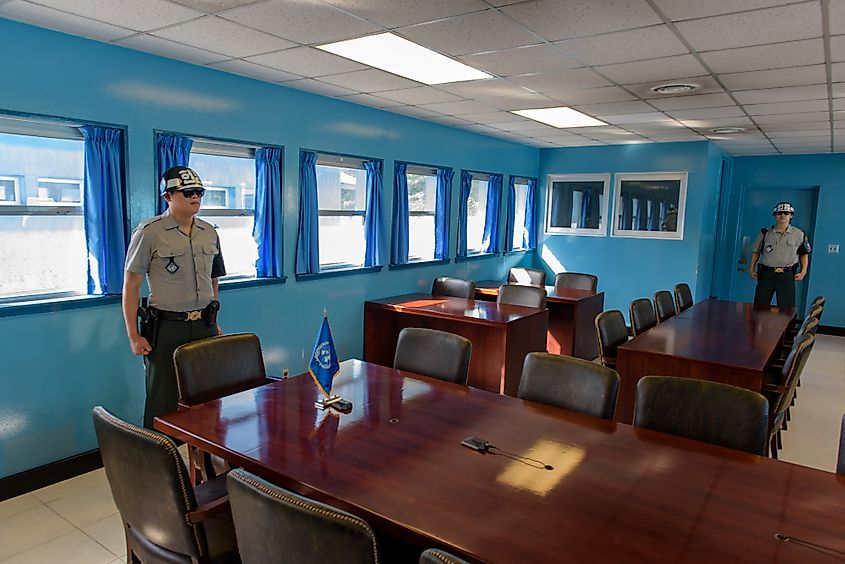
Korean Demilitarized Zone
The Korean Demilitarized Zone, or DMZ, is a buffer between the Democratic People’s Republic of Korea, otherwise known as North Korea, and the Republic of Korea, also known as South Korea. This swathe of land, which is 250 km long and 2 km wide, was put in place following the end of the Korean War (1950-1953). It marks the final battle line between Chinese and North Korean forces in the north and forces supported by the United Nations in the south, which were led by the United States. The DMZ straddles the former border between North and South Korea, which was the 38th parallel prior to the Korean War. It is not meant to be a permanent border between the two countries, but simply an armistice line, as no formal treaty has been signed officially ending the Korean War.

A Tourist Destination
Some call the DMZ one of the most dangerous places on Earth. It is true that the de facto border between North and South Korea is heavily militarized. Inside the DMZ itself, however, it is actually quite peaceful. So much so, in fact, that the zone has become a popular tourist attraction. Among the sites that tourists come to see in the DMZ is the Joint Security Area (JSA), which is 800 meters wide and 400 meters long. The JSA sits inside the so-called peace village of Panmunjom. This village is where the armistice that ended the Korean War was signed. It straddles the Military Demarcation Line (MDL), which separates the two Koreas. Soldiers from both countries face each other across this line. Panmunjom is characterized by bright blue buildings. Inside these buildings, both North and South Korea host conference halls and liaison offices on their respective sides of the MDL. The liaison offices were opened in 1971.

Other sites in the Korean DMZ include Freedom House, which is situated on the South Korean side of the buffer zone. Freedom House is a museum in which tourists can learn about the Korean War, the ongoing conflict, and the DMZ itself. There are also four tunnels located in the DMZ. These tunnels were dug by the North Korean military to launch surprise attacks against the South. One of these tunnels, the Third Infiltration Tunnel, is now a tourist attraction. The DMZ also hosts a railroad station, which serves as a rail link between the two Koreas. One of the other attractions in the DMZ is the scenery and wildlife of the area. Since the land in the DMZ has remained relatively untouched for more than half a century, it serves as a kind of unofficial wildlife refuge. The buffer zone contains more than 6,000 plant and animal species.
Diplomatic Activities In The DMZ

Although the Korean DMZ is the result of a dangerous, protracted conflict, some positive developments have taken place there. For instance, the buffer zone has played host to several inter-Korean summits. In 2019, the DMZ played host to a historic, face-to-face meeting between U.S. President Donald Trump and North Korean leader Kim Jong Un. There have, however, also been a number of diplomatic and military incidences in the DMZ. One of these incidences occurred in 1976, when North Korean soldiers murdered two American servicemen. Today, the Korean DMZ still serves as a site of diplomatic activity between the two Koreas and their allies. As previously mentioned, it is also a popular tourist destination. In fact, in 2017 alone, more than 135,000 tourists from the two Koreas visited the DMZ’s JSA, according to the U.N.











